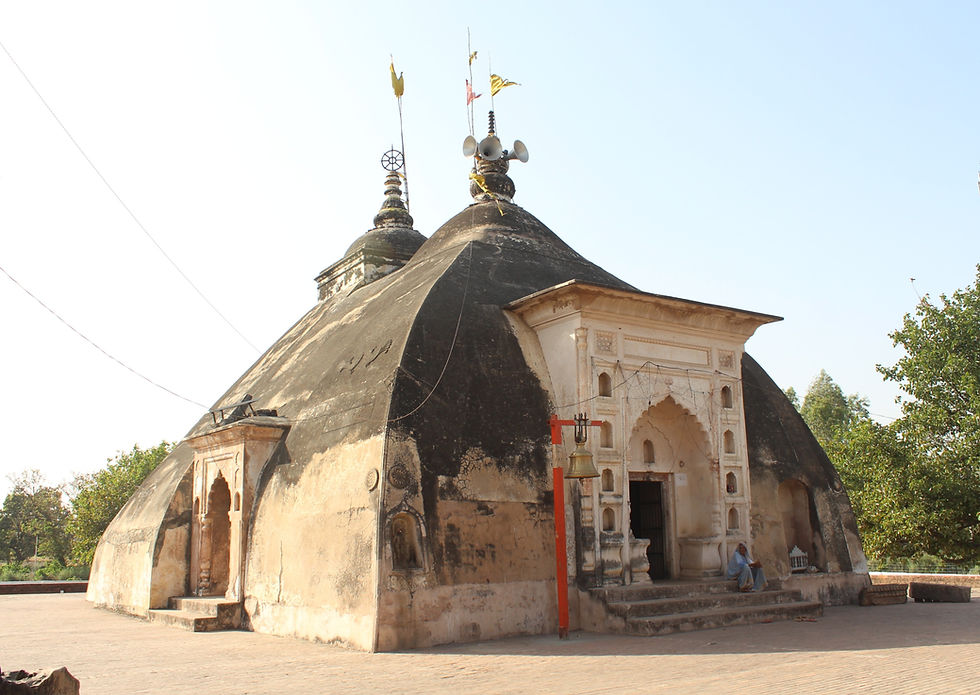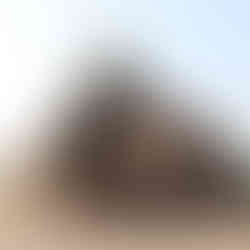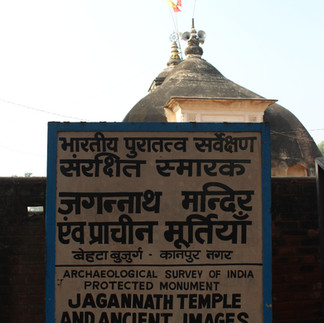Jagannath Temple at Behta Bujurg (near Kanpur) : A Rain – forecasting Temple
- kamalparu
- Jun 17, 2022
- 2 min read

Jagannath Temple, Behta Bujurg (Near kanpur)

Side View of temple ( with Lotus Petal )

Idol of Lord Jagannath
Jagannath Temple at Behta Bujurg (near Kanpur) : A Rain – forecasting Temple
· As the monsoon season is approaching, we all keep ourselves updated with rain-forecast being issued by India Meteorological Department. But people and particularly farmers living around Behta Bujurg village, situated about 40 Km from Kanpur city, look towards the ceiling of sanctum sanctorum (garbha griha) of famous Jagannath Temple located in this ancient village, to know about impending rainfall.
· The temple is dedicated to ‘Lord Jagannath’. It is popularly known as ‘Rain Temple’ or ‘Monsoon Temple’ as the drip water appear at the bottom of ceiling above sanctum sanctorum of temple about 6 to 7 days before the rain actually arrives in this area. The concentration of droplets also indicates the intensity of forth-coming rain. Mystery about its ceiling doing forecasting of rain is still unknown.
· It is believed that this temple might be constructed during the Gupta empire (c. 319 – 467 C.E, known as golden period of Indian history), or during the reign of Emperor Harshvardhana (606 to 647 CE).
Salient features of Rain Temple:
· The architecture style of this east facing temple is almost unique. It has highly unusual curving shape, with Buddhist stupa-like resemblance. Its shikhar doesn’t exactly match with the famous Nagara-style of temple construction prevalent in ancient India. When seen from sides, its 02 Nos. shikhar resembles like a chariot.
· The exterior wall of temple consists of lotus petals which is not found in any other temple of that period. The thickness of wall is about 12 to 14 feet.
· Wall-relief depicting peacock and chakra are prominently placed on exterior. Idols of deity are also placed in the niche of facade.
· The facade is very articulated and resembles to the entrance of a royal palace.
· Idols of Lord Jagannath, Lord Balabhadra and Devi Subhadra are placed inside sanctum sanctorum. All 10 incarnations (Dashavatar ) of Lord Vishnu have been carved out of black sandstone in the backdrop of main idol.
· Ancient sculptures of ‘ Sheshsayi Vishnu ‘ and ‘ Suryadev ’ are placed in ante-chambers of temple. A nearby pond also beautifies the temple complex.
· #As the Jagannath Temple at Behta Bujurg village near Kanpur city is a significant heritage site having unique feature of rain-forecasting as well as religious importance, responsibility lies with all of us to endevour for preserving it and making it a popular tourist destination.
*******






























Wonderful and amazing details about this very rare mesmerizing temple. Thank you for kindly sharing. Hare Krishna!